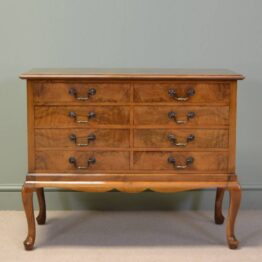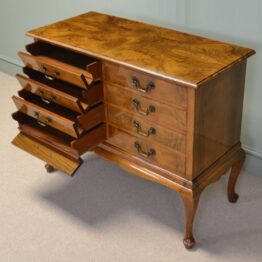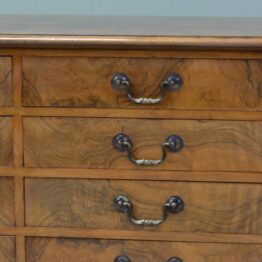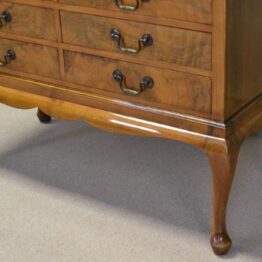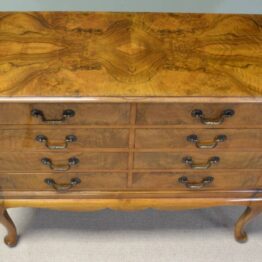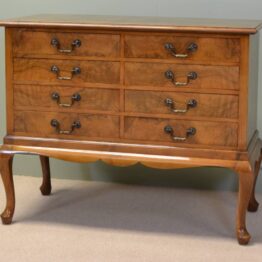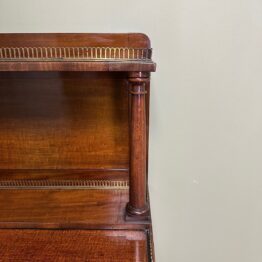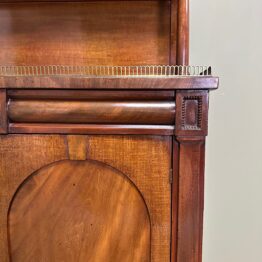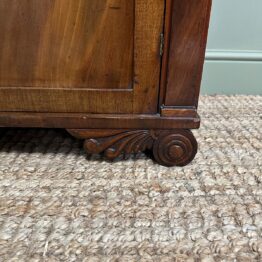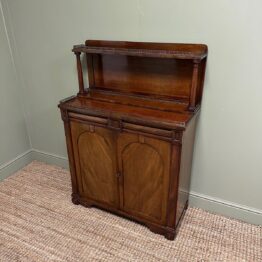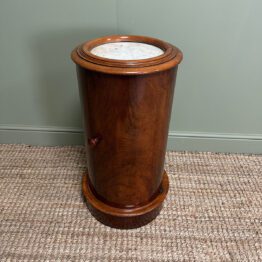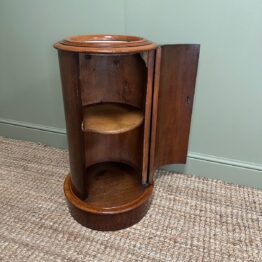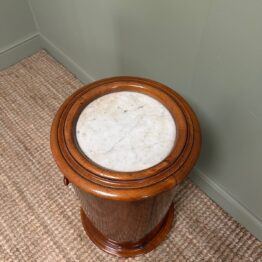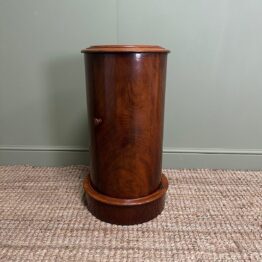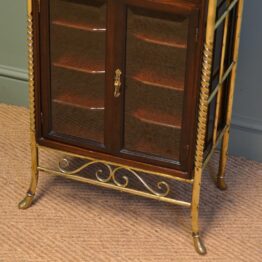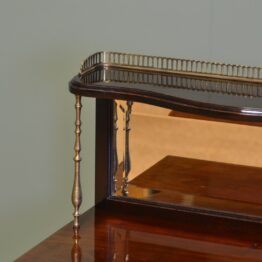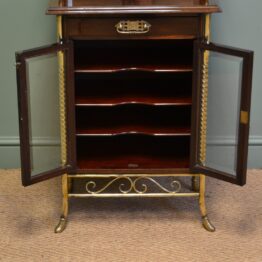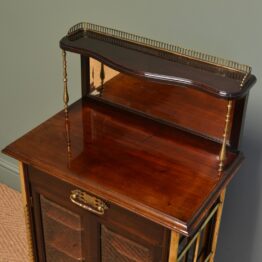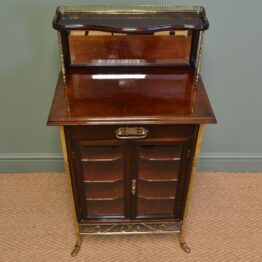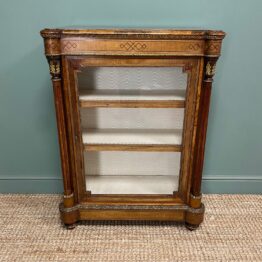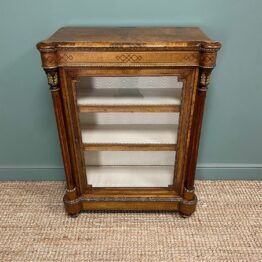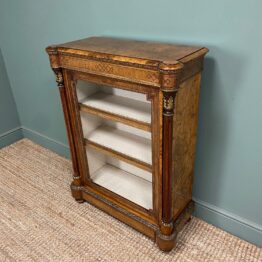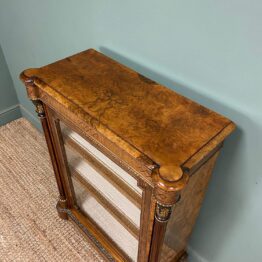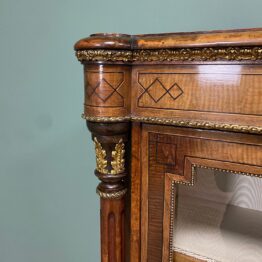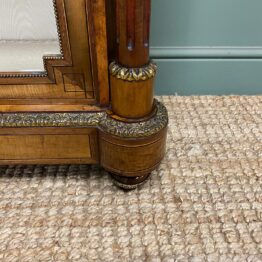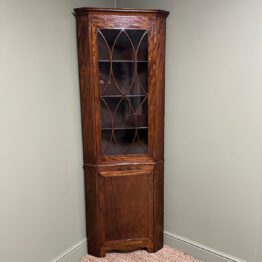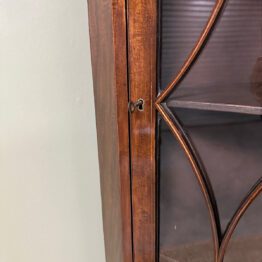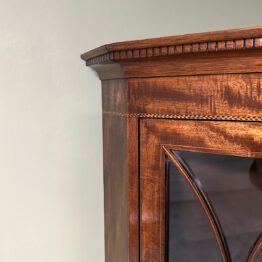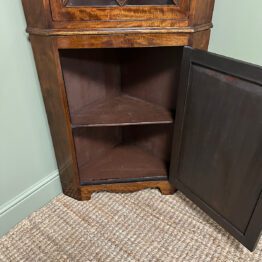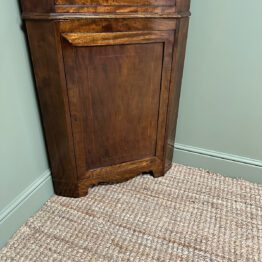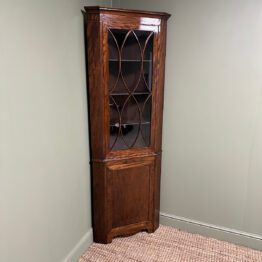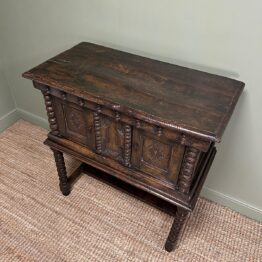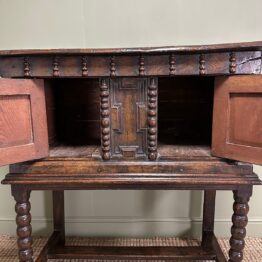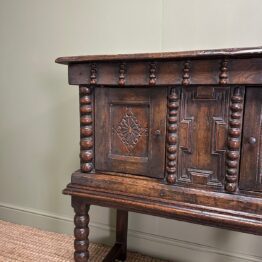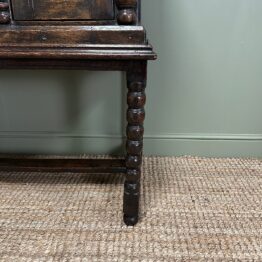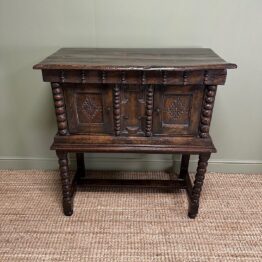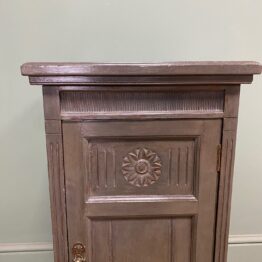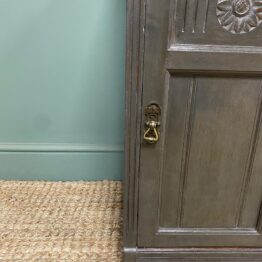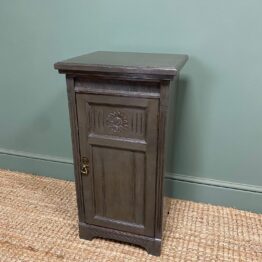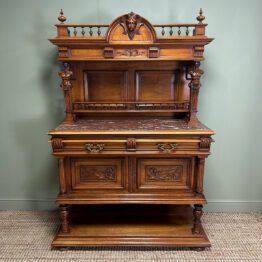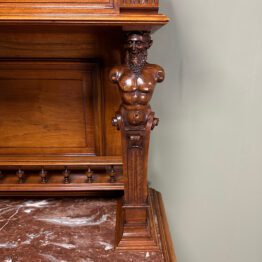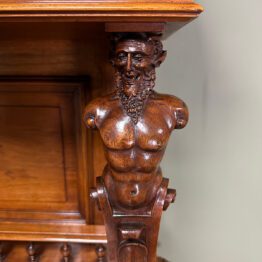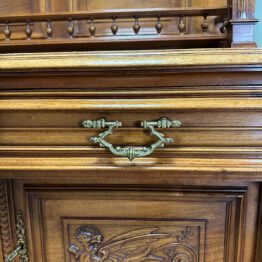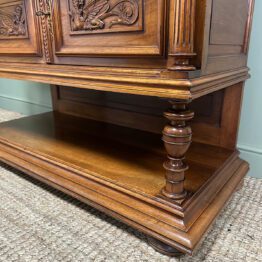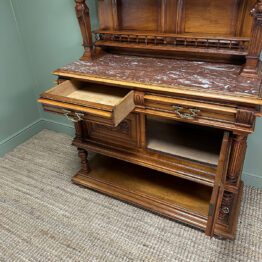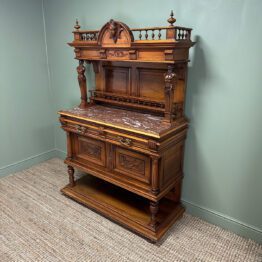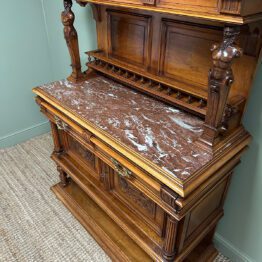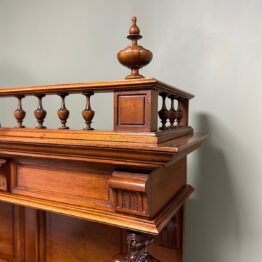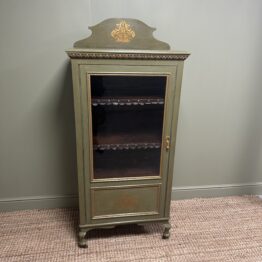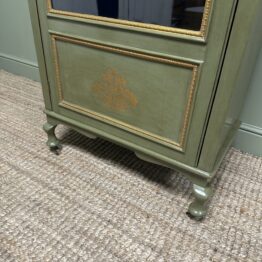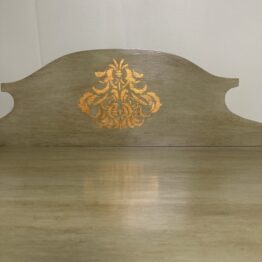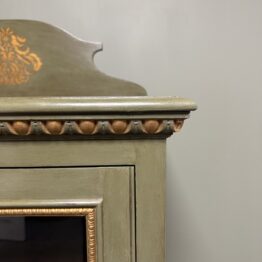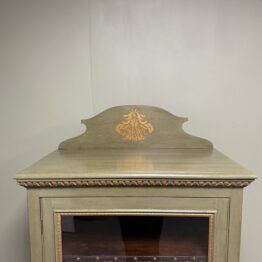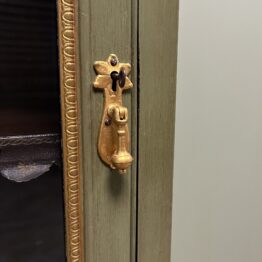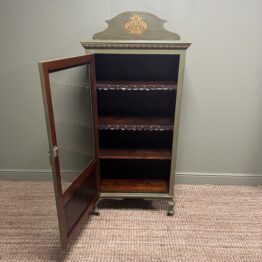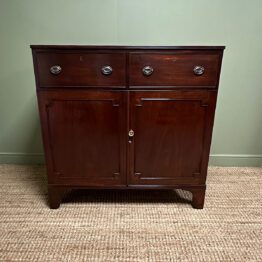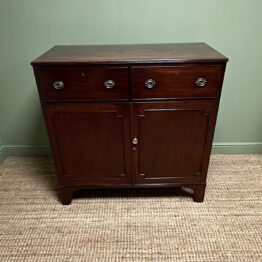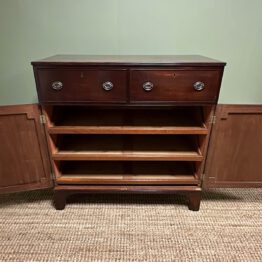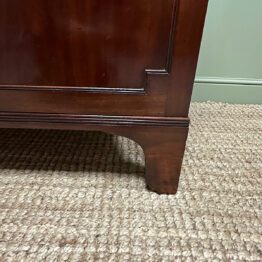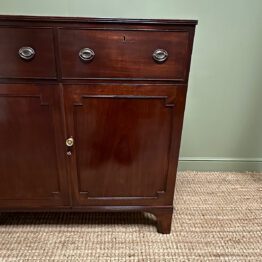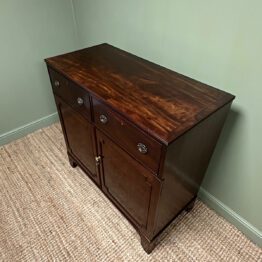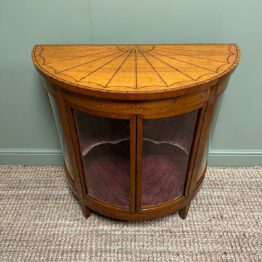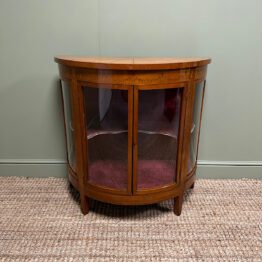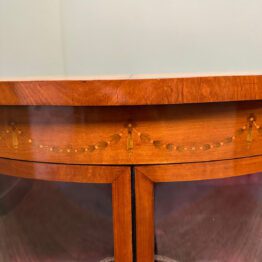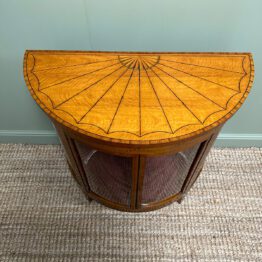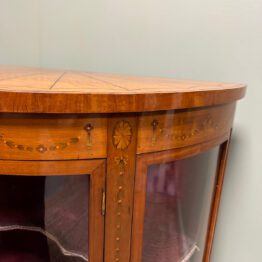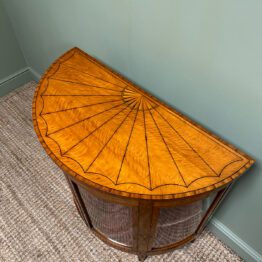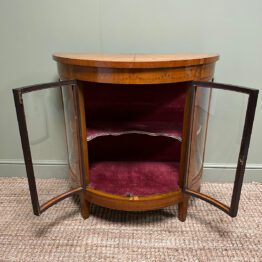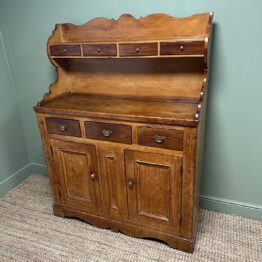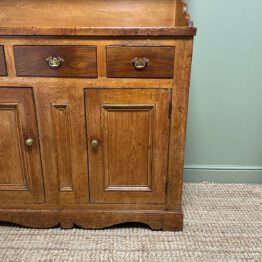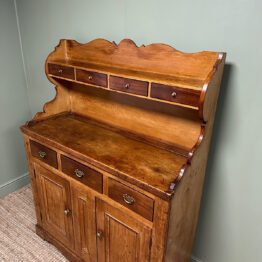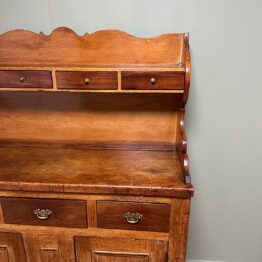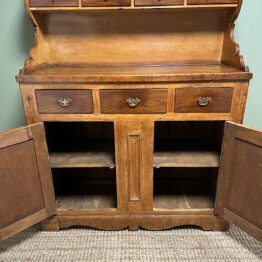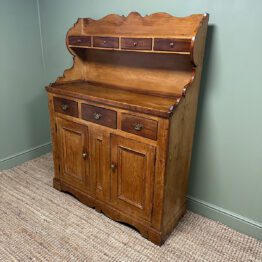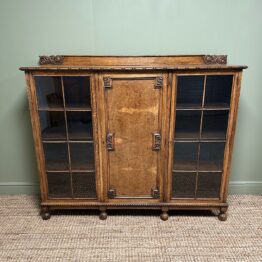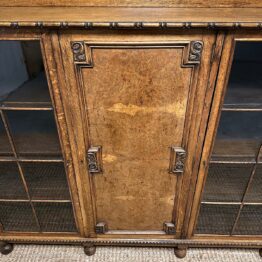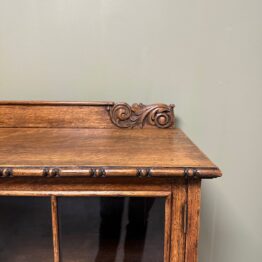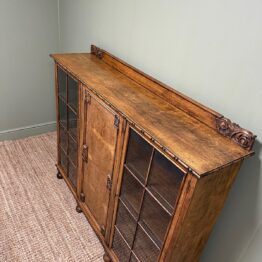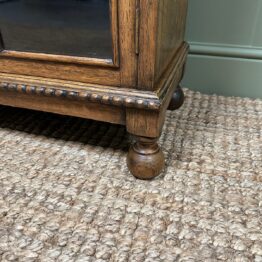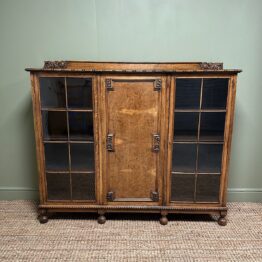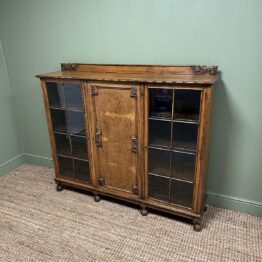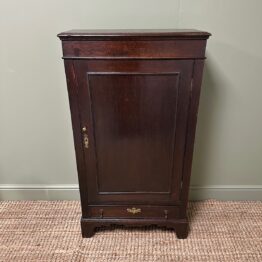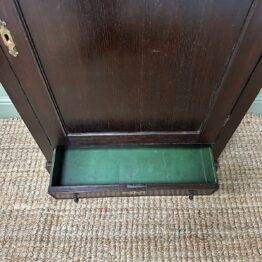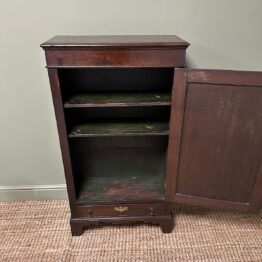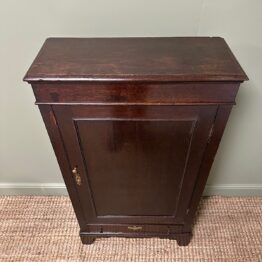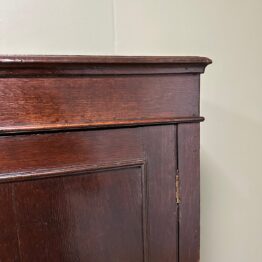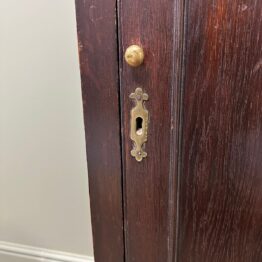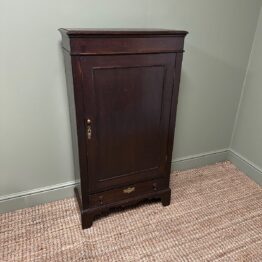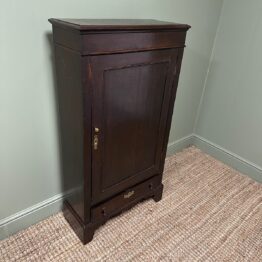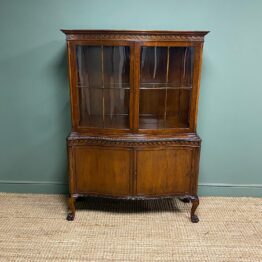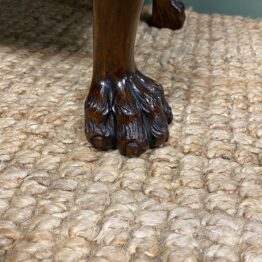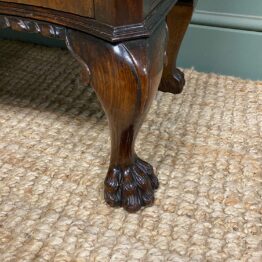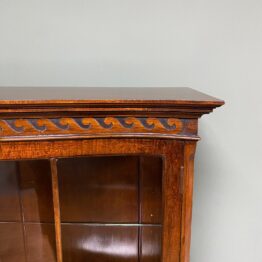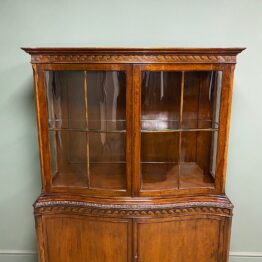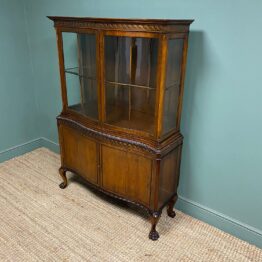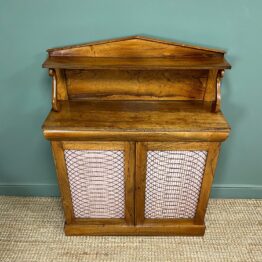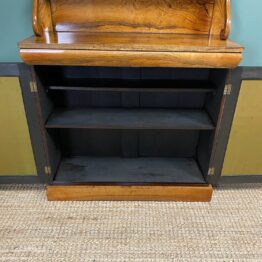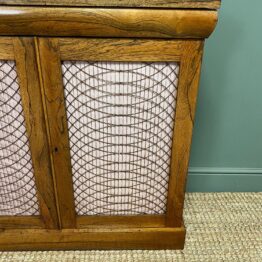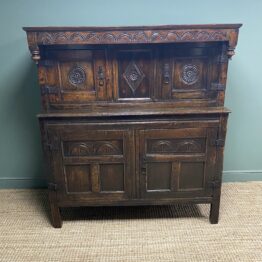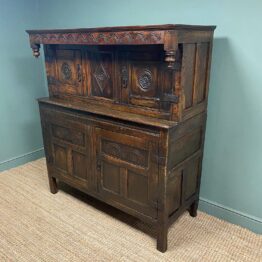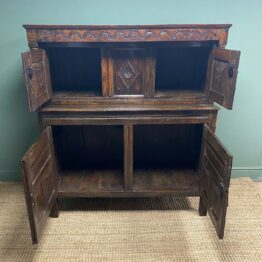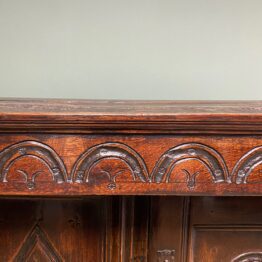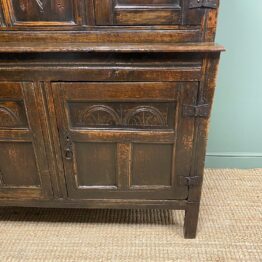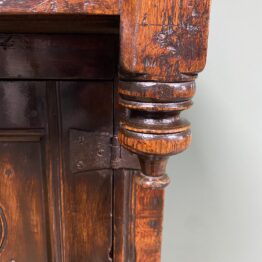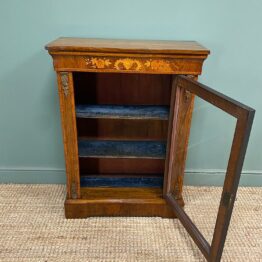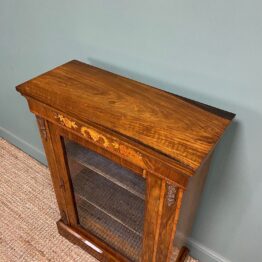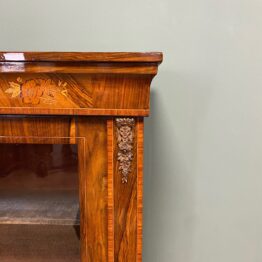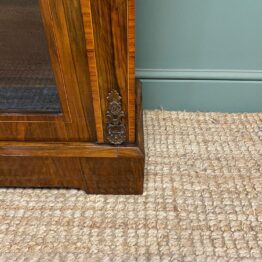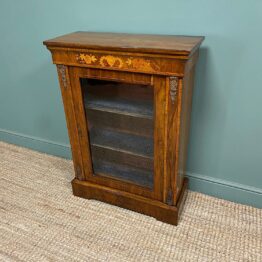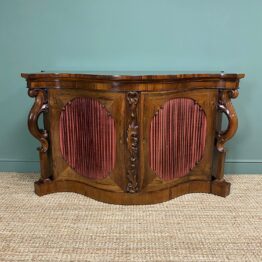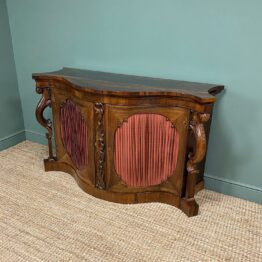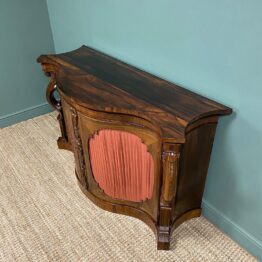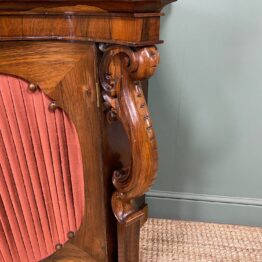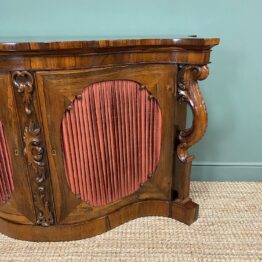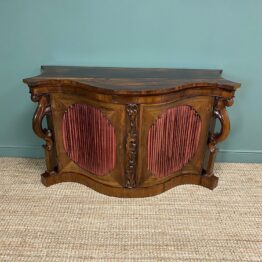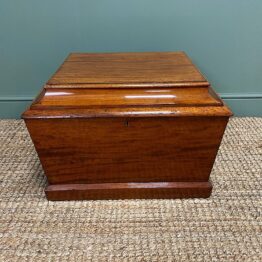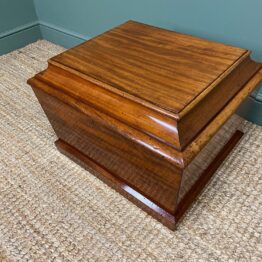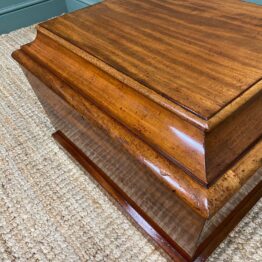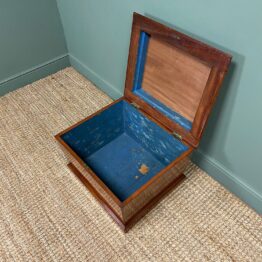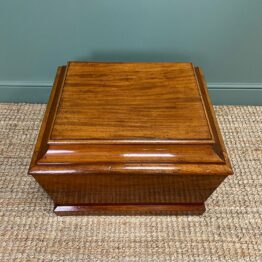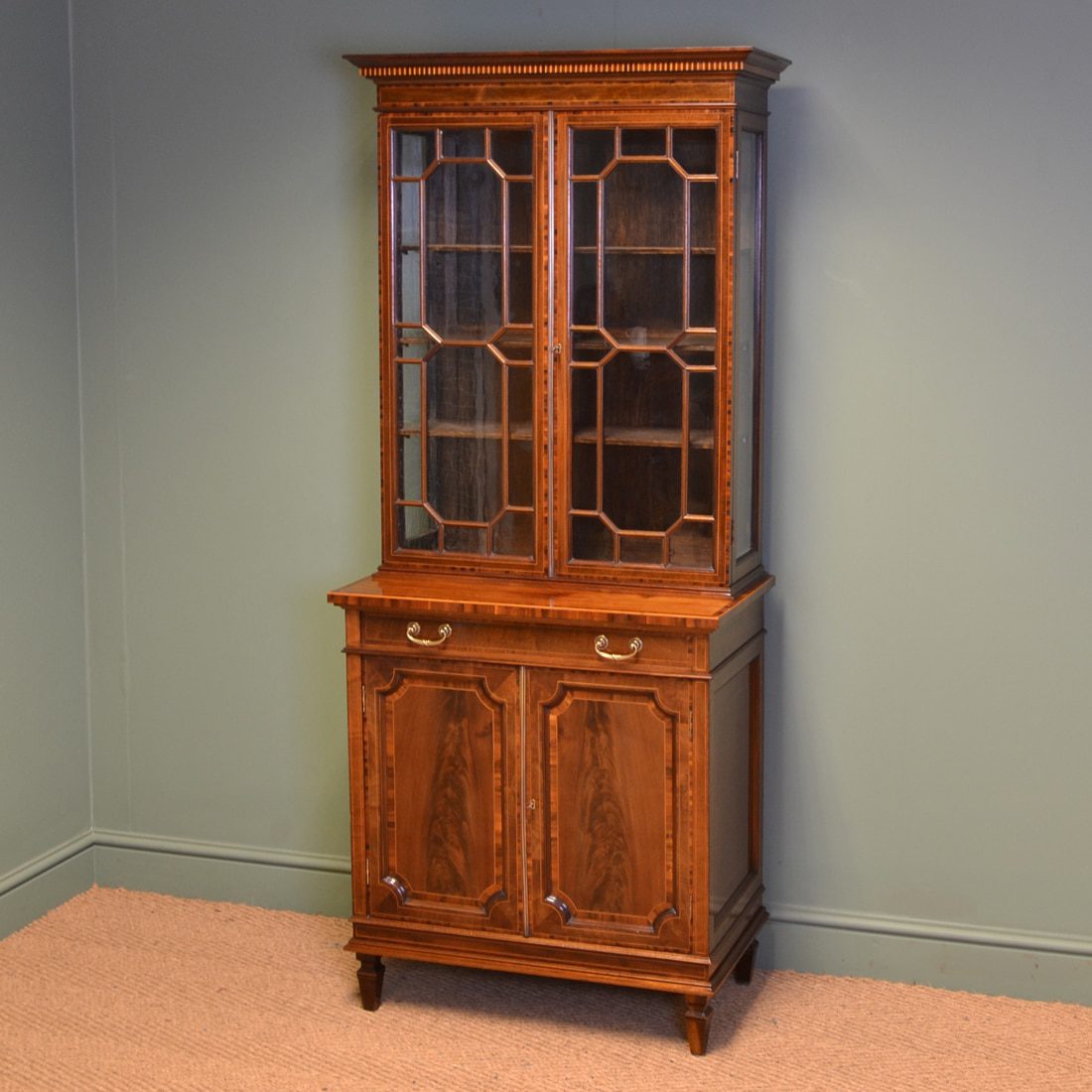In the 17th century, the English side cabinet on stand appeared, fitted with several drawers, cupboards and secret compartments enclosed by a pair of panels decorated with marquetry inlay. The 18th century furniture designers created the Mahogany ‘china display cabinet’ to show the fine oriental porcelain, frequently decorated in the Chinoiserie style to match the items within. By the mid 19th century the ownership of porcelain items was no longer just for the very rich. Now far more people aspired to the possession of things worthy of display and several new ceramics factories both at home and abroad worked to satisfy this growing appetite. The result was an explosion of designs for antique display cabinets, some dripping with ormolu; some richly inlaid in fine woods or cut brass, others in the style of Sheraton and Adam and wall hanging.
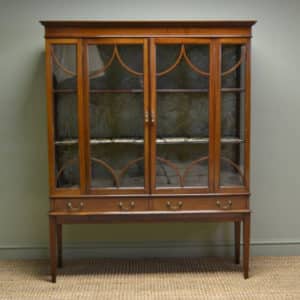
More country antique cupboards were produced in the Victorian period in simple designs like the Oak Arts & Crafts house keepers or the harness design some polished and occasionally painted. The Edwardian era was a time of new design in Antique Furniture with pieces being made to store sheet music designed by renowned makers such as Maple and Co to matching pairs of Bedside Cabinets, in beautifully figured walnut with fitted marble and French Art Nouveau influences.
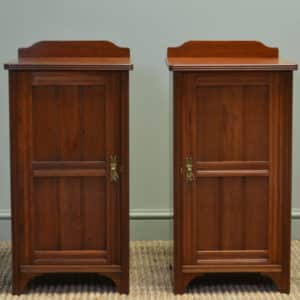
Georgian Cupboards
The antique Georgian cupboard was built throughout the periods of 1714 to 1820. Georgian Cupboards were mainly built in woods such as solid Oak (as this was locally grown in Britain) and imported Mahogany (mainly from Cuba and Honduras) or the most earliest examples were in a thick Walnut Veneer. They were built by hand using peg construction, dovetail joints and iron clout nails, so very primitive construction. French Rocco styling and Neo-classicism was added to some of the decoration as famous designers such as Adam, Hepplewhite, Sheraton and Chippendale influenced Georgian cupboard designs.
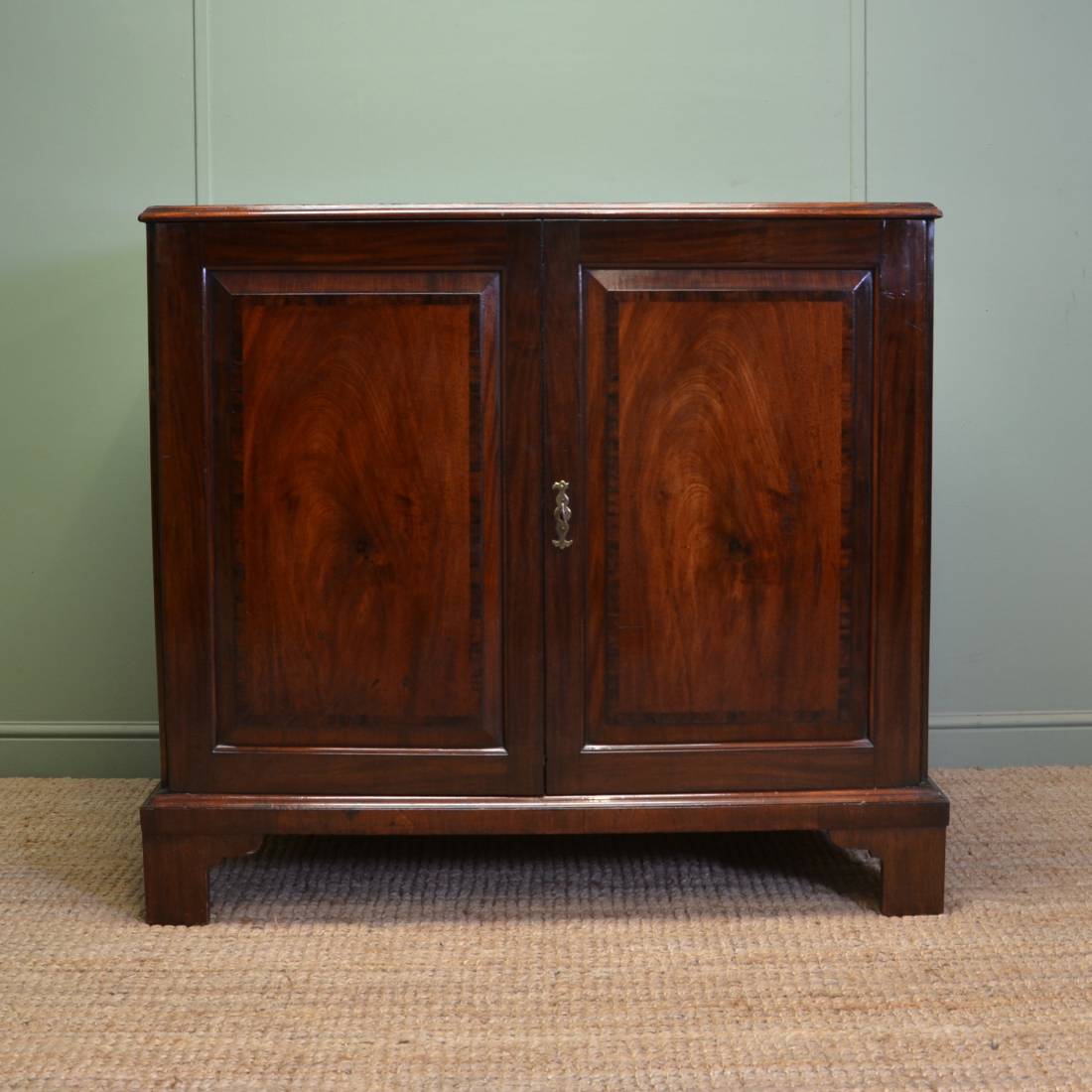
Victorian Cabinets
Victorian cupboards were very decorative with unusual timbers used in their construction. This fine quality Satinwood antique cabinet dates from the late 19th century, circa 1890 and displays fabulous kingwood and ebony inlay decoration. The doors have a wonderful brass fretwork front with pleated material backing, very ‘Regency’ in style. The doors are flanked by reeded turned columns with Corinthian designed capitals. It is a wonderful example of a quality late 19th century piece built in the Regency style. It displays fabulous herringbone and kingwood inlay around all the edges and, along with brass detailing, it compliments the golden shade of satinwood perfectly.
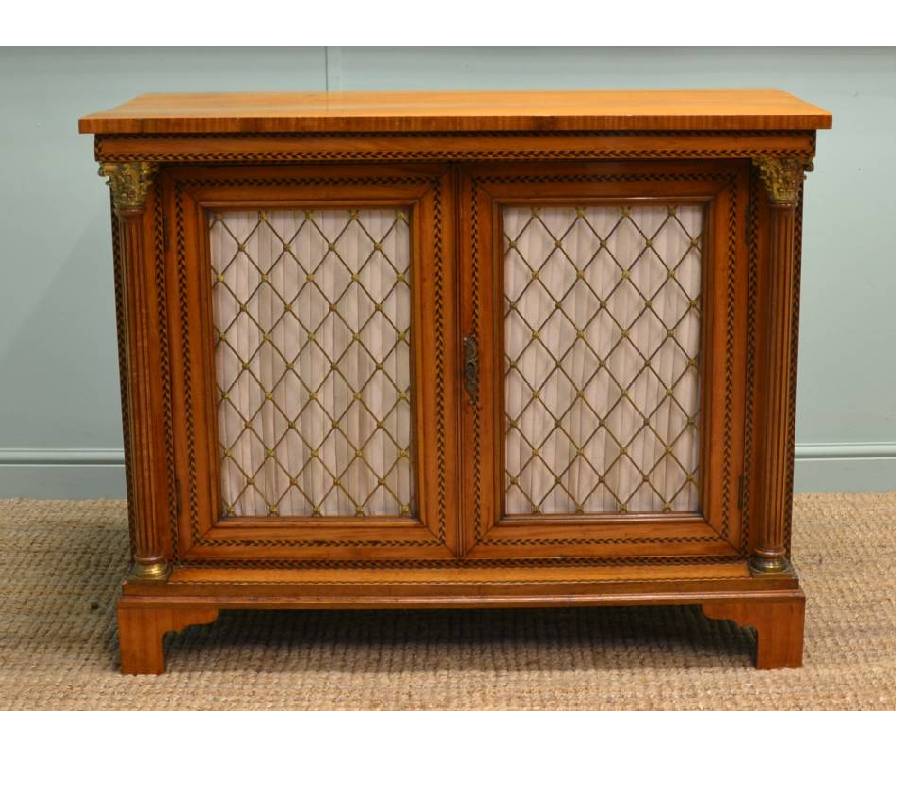
This is quite an early example of a Plum Pudding Mahogany, Antique Cupboard. Two elegantly scrolled corbels flank two cupboard doors each having wonderfully figured plum pudding mahogany panels. The piece stands on a plain plinth and oozes quality, the fine carving and best quality timbers used are signs of a true craftsman.
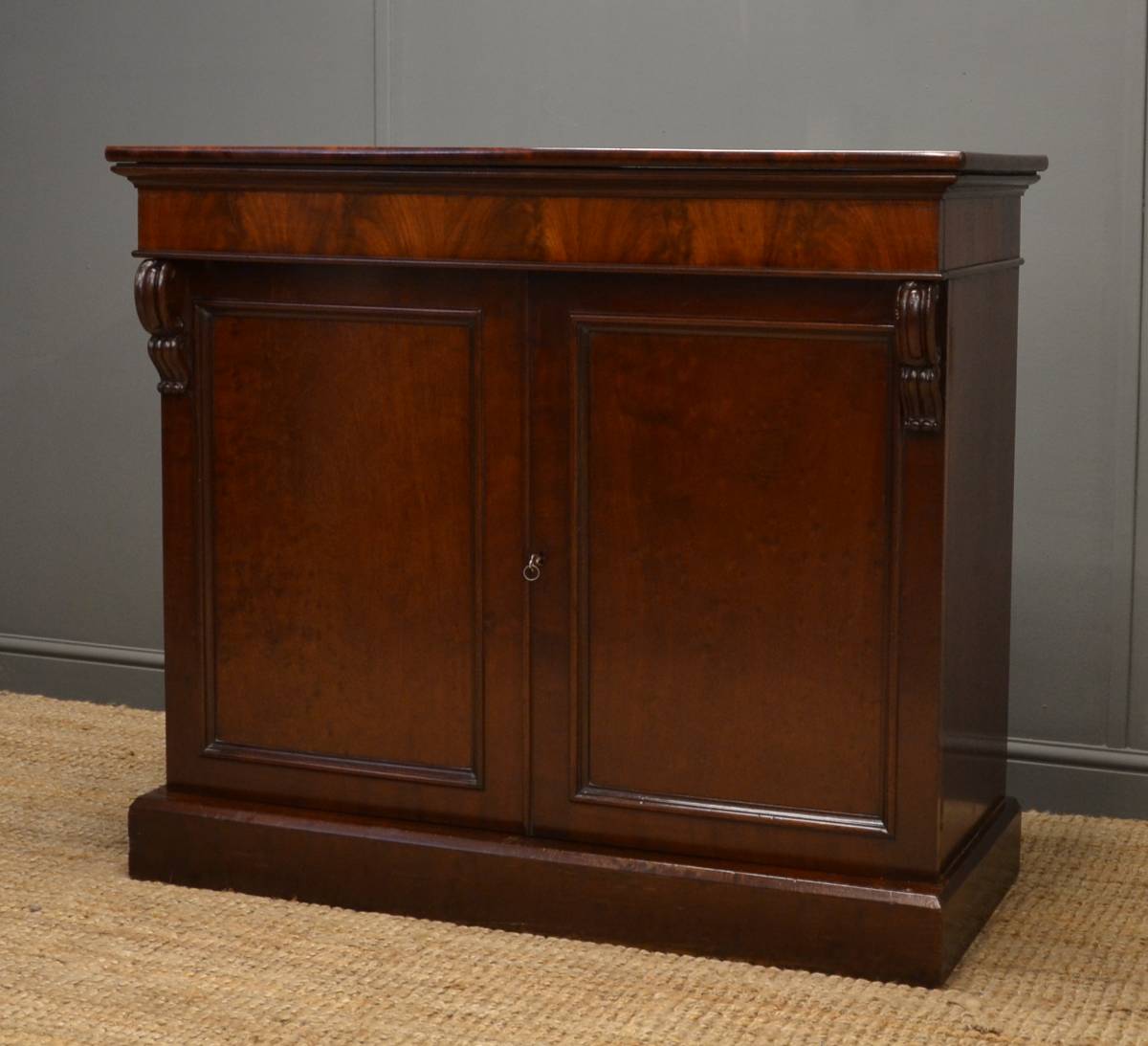
This delightful antique Regency cabinet, circa 1830, is of superb quality and made from mahogany. It shows superb attention to detail from the cabinet maker both in its style and construction, such craftsmanship is very rarely seen today and when it is found, it is usually in a bespoke piece of furniture that is justifiably priced accordingly! This cabinet has a slight inverted break fronted moulded top above two cupboard doors with simple and stylish ebony inlay decoration. There is a single brass handle and brass clash mould along with key and working lock. Flanking the doors the sides display a geometric carved indentation again simple and stylish in design. This fine quality Regency cabinet has delightful small proportions making it very desirable and practical for the modern home.
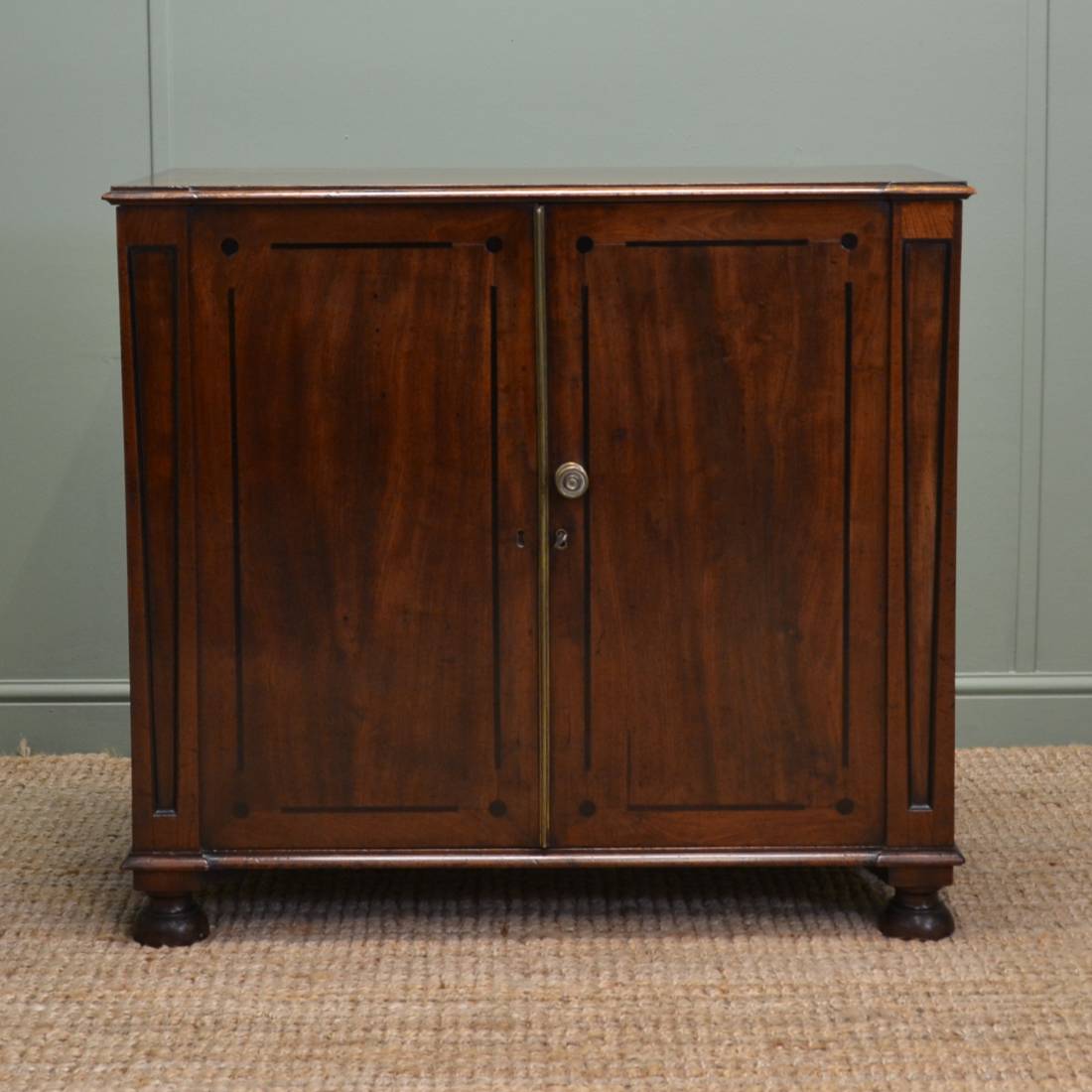
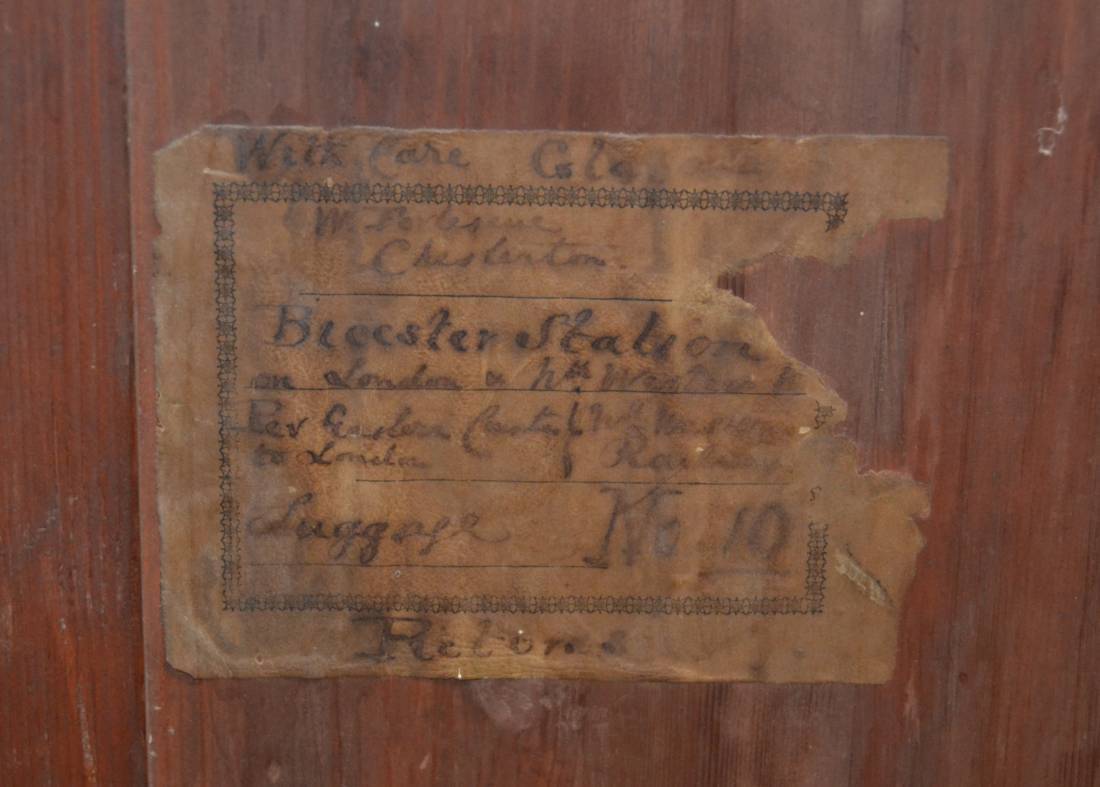
Edwardian Cabinets
The Antique Edwardian Cabinet / Cupboard dates from 1901 to 1910 when King Edward VII was on the throne, after the death of Queen Victoria. These pieces of antique furniture were designed for storage and display as quite often they will have a glazed top above an enclosed base. This was because, decorative China was high in fashion, so displaying them in Edwardian cabinets was essential, to show guests before dining. Traditional Hepplewhite, Chippendale and Sheraton design influenced the decoration in furniture of this period so you can see many interesting features in Edwardian Cabinets. The fittings will be of high quality with handles, hinges and locks made of brass.
This Delightful Edwardian Golden Oak Small Antique Cupboard circa, 1910 would make the perfect hi-fi cabinet and stands on an unusual barley twist base with turned feet.


